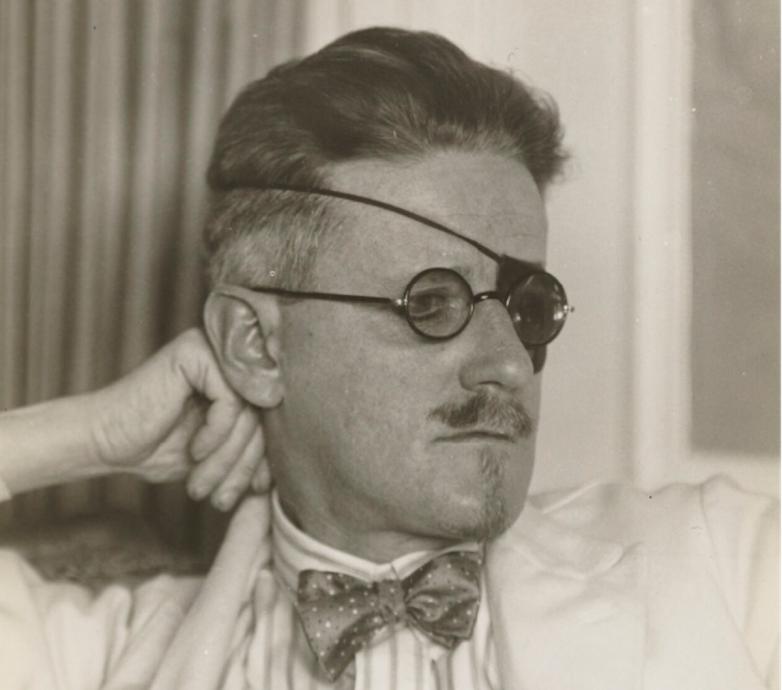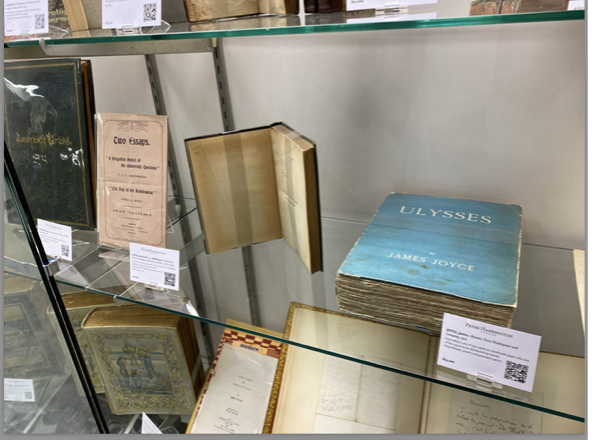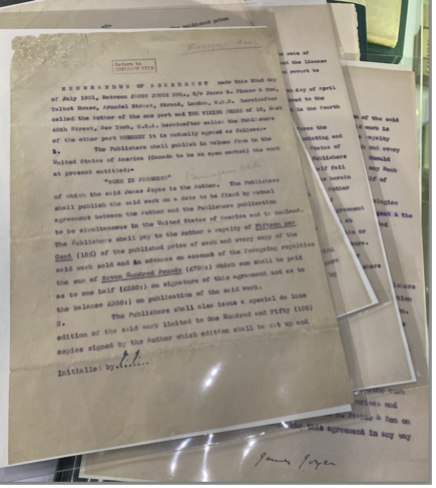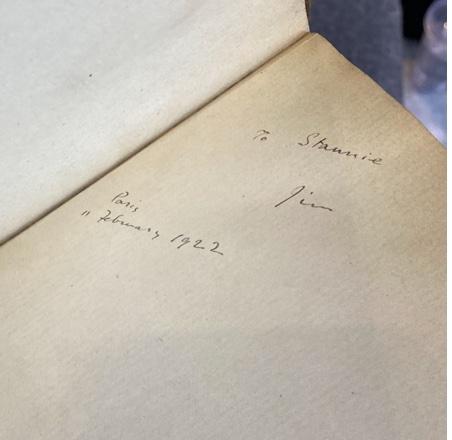Also at Harrington: A beautiful 1927 first edition of Pomes Penyeach from Shakespeare & Co., in as bright an absinthe green as we’ve seen as it is prone to fading and browning. (£1,500)
A first edition – Shakespeare & Co., 1929 – of Our Exagmination Round His Factification for Incamination of Work in Progress, the earliest critique of Work in Progress while it was in progress, published as a fundraiser for Joyce. It contains Samuel Beckett’s first appearance in print, with “Dante... Bruno. Vico… Joyce,” which opens the book. This copy is from the library of Jewish-American novelist John B. Sanford, best-known for his own experimental fiction; with Sanford’s blindstamp, and with his ownership signature using his given name “Julian L. Shapiro,” Madrid, April 4th, 1931. (£1,250)
A first English edition – Egoist Press, 1917 – of Portrait of the Artist as a Young Man, inscribed by Joyce to an early reviewer of Ulysses: “To George and Mary Slocombe, James Joyce, Paris 7. i. 1926. (£27,500)
For a fun copy of A Portrait of the Artist…, visit Type Punch Matrix (booth A35). There you’ll find a modern paperback belonging to English singer-songwriter Amy Winehouse. If you would like to own that copy, however, you will have to purchase all 225 books from Winehouse’s library catalogued by TPM. According to cofounder Rebecca Romney, “This is a collection that deserves, as much as possible, to stay together. Not only because they speak biographically about Winehouse’s life, but also because they speak to her work as an artist and as a writer.” ($135,000)
Jumping ahead a decade from “Ibsen’s New Drama,” Triolet Rare Books (booth D22) has “Gas from a Burner,” Joyce’s 1912 broadside satire composed after the publisher of Dubliners rescinded his contract and the printer destroyed nearly every copy. ($55,000)
There's also a beautiful, bright orange copy of Storiella as She Is Syung (first edition of this section of Work in Progress, which later became Finnegans Wake, one of 175 copies published by Corvinus Press, 1937, $6,500); Tales Told of Shem and Shaun (first edition, again a section of Work in Progress, this one published by Black Sun Press in1929, with a frontispiece symbolic “portrait” of Joyce by Brancusi, $2,250); Pomes Penyeach (first edition published by Sylvia Beach at Shakespeare & Co. in 1927, $450); and The Dead (1982 fine press edition, one of 150 copies published for sale by Duval and Hamilton, 170 copies the entire edition, $1,500).
To hear Joyce read from Anna Livia Plurabelle – another section of Finnegans Wake – stop by Shapero Rare Books (booth E3), where you’ll see a record produced by the Orthological Institute in Cambridge, England, in 1929; to listen you’ll have to bring your own record player. ($1,500) You can read it as you listen, as Shapero also has copy #3 of 6 copies that were for sale of the 50 copies in total printed on light green paper by Crosby Gaige in 1928. This copy bears the bookplate of one Esther Hawley. ($4,700) The copy of Finnegans Wake behind it is one of 425 copies, Faber 1939, and includes the 16-page leaflet “Corrections of Misprints in FINNEGANS WAKE.” ($11,400)



















